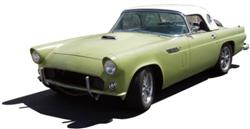Somehow we are mis-connecting here - What is the total centrifugal and mechanical advance when the vacuum is disconnected and plugged - and RPM is raised to the point where no more mechanical advance is being added by the distributor?
You have 10° initial - the centrifugal adds to that, and you want it to be all over with at about 36°-38° total. To avoid knocking while running only the initial and centrifugal, this sum should be reached at say 3000 RPM. If it runs way up over 3000 RPM to get to the full mechanical stop - you should consider getting the distirbutor "re-curved".
Engines wil run pretty well with mechanical and centrifugal alone and a reasonably "quick" curve. This meaning the sum of inital and centrifugal rises to full at 3000 RPM or so. The vacuum advance is added to provide part throttle fuel economy on the street. When it is added in - total advance with all three features summed - can go up over 45° and more. But when you hit the throttle -and vacuum drops away - you will be running on the mechanical curve (initial plus centrifugal).
When the distributor vacuum pot is run on ported vacuum - not venturi vacuum (different subject) - you will not be adding any vacuum advance at idle. The engine will run on the initial alone. Even with the initial set at 10°-12° - my 312 will elevate its water temperature when run at idle on ported vacuum. If you switch to using manifold vacuum advance at idle - the engine speed will elevate, and the temperature will drop. It will cause you to want to "retune" the idle mixture but the temperature reduction will remain.

Steve Metzger Tucson, Arizona